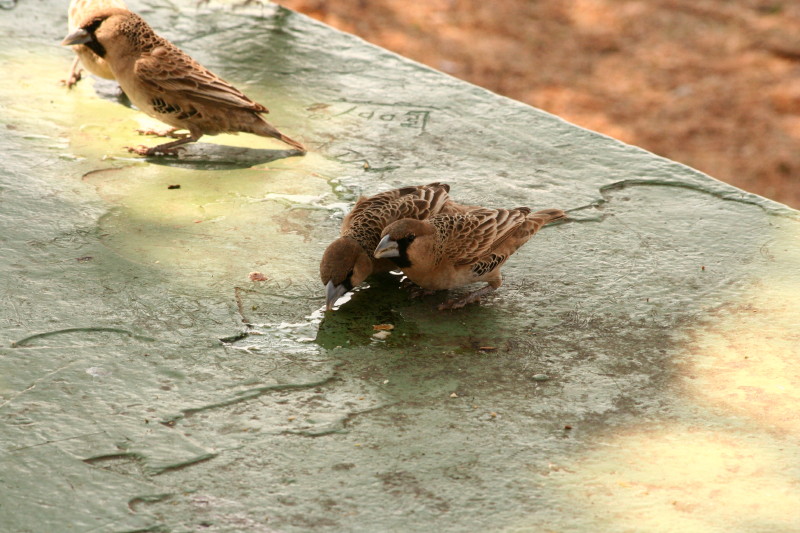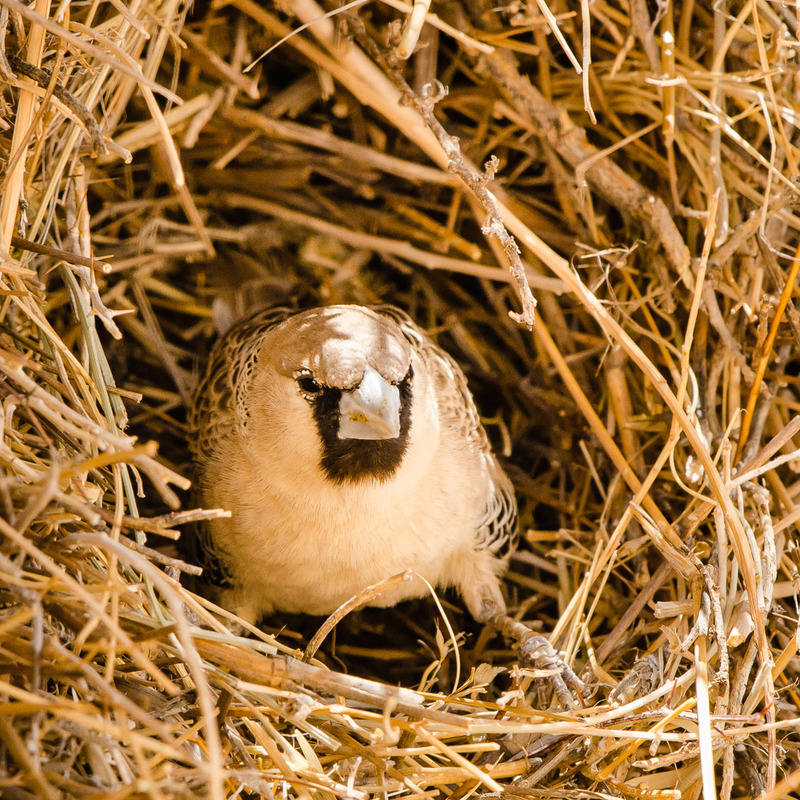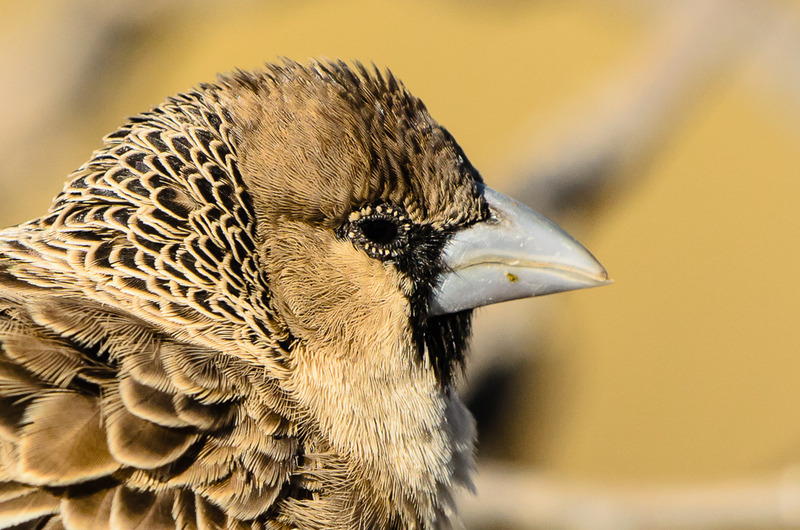Sociable Weaver, Philetairus socius
Posted: Sun Mar 06, 2016 10:22 am
Sociable Weaver, Bird of the Year 2016
Johannesburg, 25 January 2016: The Bird of the Year for 2016 is the Sociable Weaver.
“The Sociable Weaver is an icon of southern Africa’s arid zones, and one of the drawcards that attracts visitors to the Kalahari. They are small birds with big personalities, and they have a complex and very interesting social life” BirdLife South Africa’s Chief Executive Officer Mark D. Anderson said. These birds, which weigh about 29 grams, build the world’s largest nest. Some nests, weighing more than 1000 kg, can have 500 inhabitants!
‘Bird of the Year’ is one of BirdLife South Africa’s initiatives to raise awareness about birds, bird conservation and the protection of bird habitats. Educating people is a key component of BirdLife South Africa’s conservation work, and therefore its marketing and education team develop Bird of the Year learning materials for schools. This year the resources will be about the Sociable Weaver, but also include information about other weavers, the arid zone, climate change, and other relevant matters.
“Although Sociable Weavers are not found throughout South Africa, many other weaver species are widespread. The learning materials which are being developed for schools and other groups will therefore being linked to weavers in general. Some aspects of these
birds which are of interest are their intricate weaving skills and their diverse breeding
systems,” said Nikki McCartney, Events and Marketing Manager at BirdLife South Africa.
One cannot travel to the Kalahari and surrounding arid areas without noticing these Sociable Weavers’ nests. “They are like giant haystacks placed in a tree or on a telephone pole”, said Anderson. The massive nests have several functions, but especially the buffering of the extreme temperatures in our region’s deserts and semi-desert areas. “The nest occupants include a range of other animals, from Pygmy Falcons and Red-headedWeavers to Cape Cobras, lizards and wasps”, Anderson added.
The Sociable Weaver’s range is increasing, especially as they build their nests on artificial structures, such as telephone and electricity poles and windmills. The Southern African Bird Atlas Project 2, using innovative data collection methods (such as the BirdLasser app) is tracking the birds range and relative abundance. See http://www.adu.org.za for more information.
Johannesburg, 25 January 2016: The Bird of the Year for 2016 is the Sociable Weaver.
“The Sociable Weaver is an icon of southern Africa’s arid zones, and one of the drawcards that attracts visitors to the Kalahari. They are small birds with big personalities, and they have a complex and very interesting social life” BirdLife South Africa’s Chief Executive Officer Mark D. Anderson said. These birds, which weigh about 29 grams, build the world’s largest nest. Some nests, weighing more than 1000 kg, can have 500 inhabitants!
‘Bird of the Year’ is one of BirdLife South Africa’s initiatives to raise awareness about birds, bird conservation and the protection of bird habitats. Educating people is a key component of BirdLife South Africa’s conservation work, and therefore its marketing and education team develop Bird of the Year learning materials for schools. This year the resources will be about the Sociable Weaver, but also include information about other weavers, the arid zone, climate change, and other relevant matters.
“Although Sociable Weavers are not found throughout South Africa, many other weaver species are widespread. The learning materials which are being developed for schools and other groups will therefore being linked to weavers in general. Some aspects of these
birds which are of interest are their intricate weaving skills and their diverse breeding
systems,” said Nikki McCartney, Events and Marketing Manager at BirdLife South Africa.
One cannot travel to the Kalahari and surrounding arid areas without noticing these Sociable Weavers’ nests. “They are like giant haystacks placed in a tree or on a telephone pole”, said Anderson. The massive nests have several functions, but especially the buffering of the extreme temperatures in our region’s deserts and semi-desert areas. “The nest occupants include a range of other animals, from Pygmy Falcons and Red-headedWeavers to Cape Cobras, lizards and wasps”, Anderson added.
The Sociable Weaver’s range is increasing, especially as they build their nests on artificial structures, such as telephone and electricity poles and windmills. The Southern African Bird Atlas Project 2, using innovative data collection methods (such as the BirdLasser app) is tracking the birds range and relative abundance. See http://www.adu.org.za for more information.







